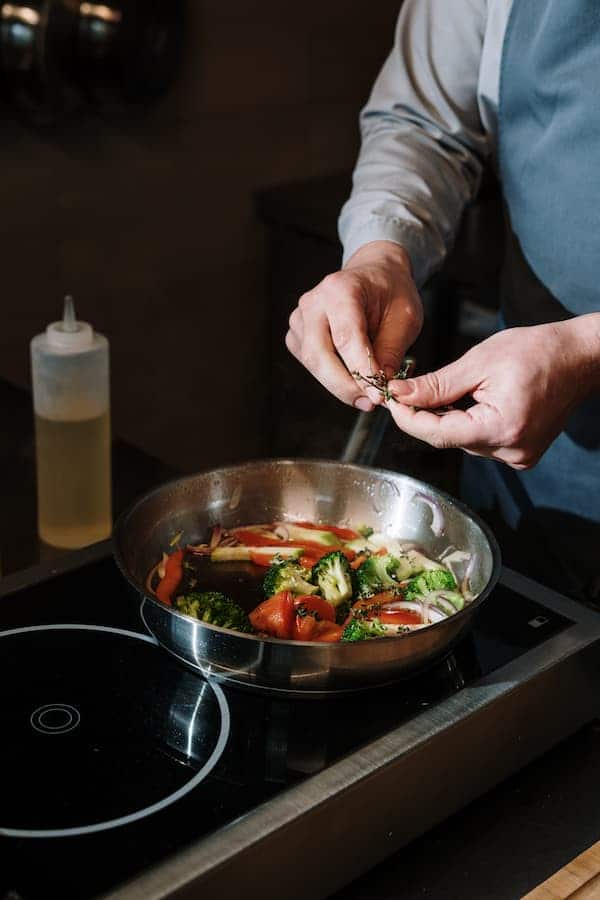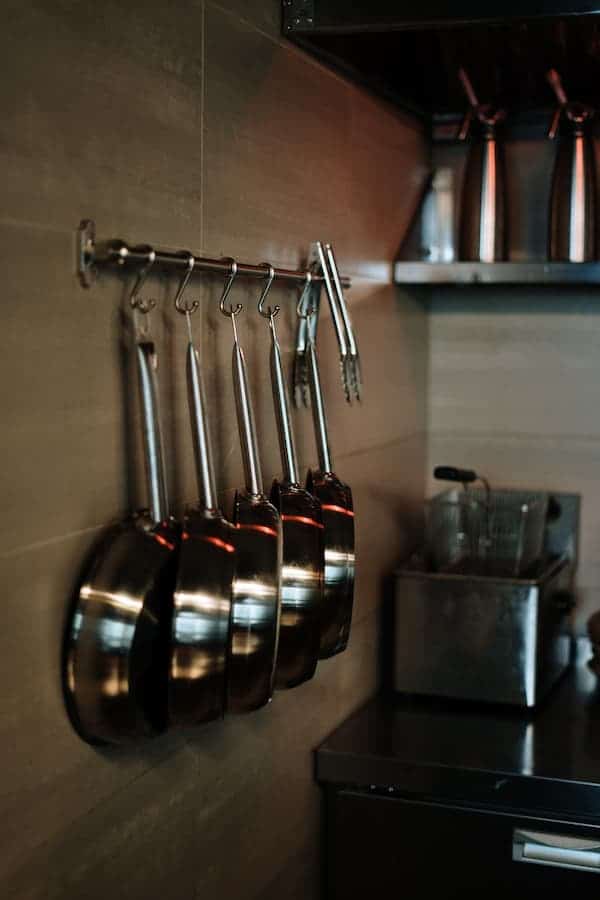As an Amazon Associate we earn from qualifying purchases.
With the ongoing debates that certain cookware coatings contain or produce PFAs that can cause cancer, everyone is searching for safer and healthier alternatives. One of the best cookware options to consider is stainless steel.
Health benefits aside, there are great reasons why just about all chefs prefer cooking with stainless steel exclusively. If you are using stainless steel cookware for the first time, let’s go through some of the fundamental dos and don’ts of preparing food with this material.
Quick Navigation
How to Cook With Stainless Steel
Apart from the fact that stainless steel won’t leach into food, this material distributes heat evenly and is virtually indestructible.

Stainless steel is a bad heat conductor, is not naturally non-stick, and not dishwasher safe. This makes it necessary to prepare and take care of your pots to get the best results.
Season Your Pan
Although this step is not always mandatory, it is crucial to season your stainless steel cookware from time to time.
There are 2 simple methods you can use.
- Method 1: Oil your pan and let it sit on a medium burner for a few minutes.
- Method 2: Season your pan in an oven. For the best outcome, use sesame oil or any oil that has a high smoking point.
Preheat Your Pan
Did you know that stainless steel is porous when cold? Even though you cannot feel or see the pores, their edges are responsible for making food stick.
By preheating your pan, the steel expands and closes the pores to create a smooth non-stick surface.
Do a “TSS” Test
I prefer using a drop of water to test whether my pan is ready, although you can also use a small morsel of food. You will know that your affordable cookware set is preheated as desired if you hear a “TSS” sound.
The correct way to preheat the pan is to start with medium heat and adjust from there, unlike cast iron that has great heat distribution.
Oil the Pan
Now that you have done a test to verify that your pan is hot enough, lift it from your burner and add some oil. Use a pastry brush to smear the fat or swirl it around.
After this, place the pan back on the stove. Bear in mind that because of the oil, it will heat pretty fast. You should be ready to start cooking in 3-5 seconds.

Know When to Flip the Food
Stainless steel does an outstanding job of browning food. If you have followed the above step, there is a good chance the outcome of your food preparation will be spectacular.
Here’s the deal: if you are browning meat, for instance, it will develop a nice crust once it is adequately seared.
In short, it won’t stick because the pores have nothing to grab, and the meat will naturally release the pan.
Have patience – if the meat feels stuck on the pan, it’s not ready to be flipped.
Uphold Proper Stainless Steel Care Practices
It is imperative to wipe off the residual oil and crumbly bits from your pan while it’s still warm. You can use a paper towel or soft cloth for this, and perhaps use tongs if you are worried about burning your fingers.
Once the pan looks somewhat clean, place it back on your burner on medium heat and deglaze it by pouring a cup of hot water on the pan.
Give it a minute or two, then discard the water and wipe the pan once more using a paper towel or cloth.
You should clean your stainless steel cookware with warm water and soap only when it is absolutely necessary. Each time you use water, make sure you re-season the pan.
I am highly cautious against using dishwasher detergent because it tends to be somewhat abrasive, and it may also leave some residue. It is also crucial not to clean your stainless steel cookware in a dishwasher to avoid spotting.
Conclusion
For anyone using stainless steel cookware the first time, I hope that the information in my post is helpful.
Pots and pans crafted from this material are a real workhorse if you know how to use them properly. The best part is that they can last for ages with proper maintenance.
